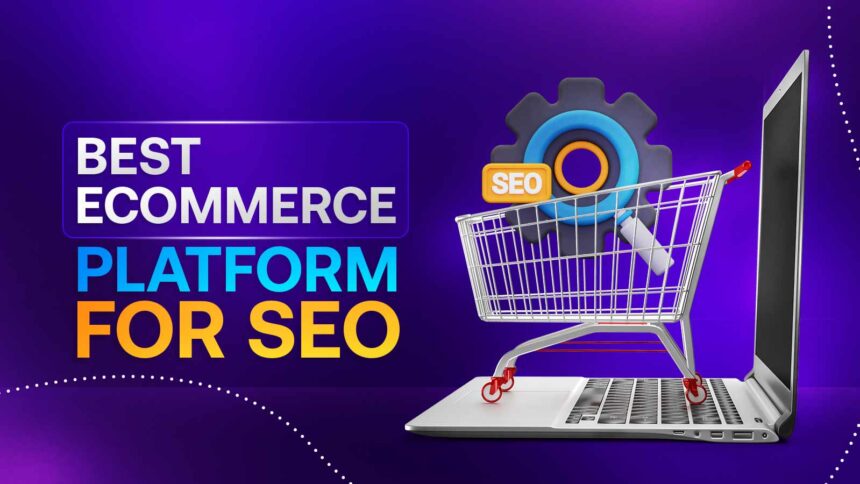In today’s digital marketplace E-commerce SEO (Search Engine Optimization) is a crucial component for online store success. With thousands of businesses competing for attention, standing out on search engines like Google can make or break an e-commerce brand. Effective SEO helps drive organic traffic, reduce paid advertising dependency, and increase sales by ensuring your website is visible when users search for related products.
This article explores all the essential elements of effective e-commerce SEO, covering on-page optimization, technical SEO, keyword research, link building, and user experience enhancements.
What is E-commerce SEO?
E-commerce SEO is the process of optimizing your online store to improve its visibility in search engine results pages (SERPs). It involves applying SEO best practices to product pages, category pages, metadata, and technical aspects of the website. Unlike traditional SEO, e-commerce SEO requires managing a larger number of pages and dealing with duplicate content, faceted navigation, and complex site architecture.
Why E-commerce SEO Matters
- Increases organic traffic: Over 44% of people start their online shopping journey with a Google search.
- Improves user experience: SEO-friendly websites are easier to navigate and offer faster load times.
- Higher ROI: Organic traffic tends to convert better than traffic from paid ads.
- Long-term results: SEO brings sustained traffic without continuous ad spend.
Essential Components of Effective E-commerce SEO
1. Keyword Research
Proper keyword research is the foundation of effective e-commerce SEO. Understanding what your potential customers are searching for helps you target the right keywords.
Tips for keyword research:
- Use tools like SEMrush, Ahrefs, or Google Keyword Planner.
- Focus on buyer intent keywords (e.g., “buy running shoes online”).
- Identify long-tail keywords (e.g., “best waterproof hiking shoes for men”).
- Avoid overly competitive head terms unless you have a strong domain authority.
2. Optimized Product Pages
Your product pages should be optimized to both convert and rank.
Key elements:
- Unique product descriptions: Avoid using manufacturer descriptions.
- Keyword placement: Naturally include primary and secondary keywords in the title, meta description, headers, and body content.
- High-quality images: Use optimized file names and alt tags.
- User reviews: These add fresh, user-generated content and boost trust.
3. Site Architecture
A clean and organized site structure helps both users and search engines navigate your store.
Best practices:
- Keep a flat architecture: Important pages should be no more than three clicks away from the homepage.
- Use breadcrumb navigation for better internal linking.
- Maintain a URL structure that’s clean and keyword-rich (e.g., www.mystore.com/shoes/running).
Technical SEO for E-commerce
Technical SEO ensures that your website is accessible and indexable by search engines.
1. Page Speed Optimization
Fast-loading pages lead to better user experience and improved rankings.
- Compress images without losing quality.
- Use lazy loading for images.
- Enable browser caching and minify CSS/JS.
2. Mobile-Friendliness
Most online shoppers browse on mobile devices, so your site must be responsive.
- Use Google’s Mobile-Friendly Test tool.
- Ensure clickable elements aren’t too close together.
- Optimize mobile navigation and checkout process.
3. Secure HTTPS Protocol
Security is a ranking factor and essential for gaining customer trust. Ensure your site uses SSL encryption.
4. Canonicalization and Duplicate Content
E-commerce websites often face duplicate content due to similar product variations or category filters.
- Use canonical tags to point to the preferred version of a page.
- Implement robots.txt and noindex tags when necessary.
On-Page SEO Strategies
On-page SEO improves how each page ranks individually in search results.
Meta Titles and Descriptions
- Include target keywords.
- Keep the title under 60 characters and meta description under 160.
- Write persuasive copy to improve click-through rates (CTR).
Header Tags (H1, H2, H3)
Structure your content using proper headers for readability and SEO.
Internal Linking
Link related products or categories within your product descriptions or blog posts to enhance user navigation and SEO.
Content Marketing for E-commerce
Blogging and other content strategies can bring in organic traffic and build authority.
Ideas for content:
- Product guides and comparisons.
- How-to articles (e.g., “How to clean leather boots”).
- Seasonal trend roundups.
- Customer stories or testimonials.
This content can rank for long-tail keywords and serve as landing pages for users in the awareness phase of the buying funnel.
Link Building Strategies
Backlinks remain one of the top ranking factors. E-commerce websites can build links through:
- Guest posting on relevant blogs.
- Collaborating with influencers or reviewers.
- Submitting to shopping directories.
- Creating shareable content like infographics or trend reports.
Avoid black-hat techniques like buying links, which can lead to penalties.
User Experience and SEO
Google’s algorithm increasingly emphasizes user experience (UX) signals like dwell time bounce rate and engagement.
UX tips for e-commerce:
- Ensure easy navigation and search functionality.
- Offer filters and sorting options on category pages.
- Use clear CTAs (Call to Actions) like “Add to Cart” or “Buy Now.”
- Simplify the checkout process to reduce cart abandonment.
Measuring SEO Success
Use analytics tools to track the effectiveness of your e-commerce SEO efforts.
Tools to use:
- Google Analytics: Monitor traffic sources, bounce rate, and conversions.
- Google Search Console: Track rankings, indexing issues, and click-through rates.
- Ahrefs or SEMrush: Monitor keyword rankings and backlinks.
KPIs to monitor:
- Organic traffic growth
- Keyword ranking improvements
- Bounce rate and dwell time
- Conversion rate from organic search
Conclusion
Effective e-commerce SEO is more than just adding keywords to product pages—it’s a comprehensive strategy that involves keyword research on-page and technical optimization UX enhancements and consistent content and link-building efforts.
By investing in well-rounded SEO practices e-commerce brands can achieve long-term growth boost their online visibility and outperform competitors in an increasingly saturated digital landscape.
The beauty of SEO lies in its compounding nature. With time consistent effort and a user-first mindset, e-commerce SEO not only improves search rankings but also builds a better shopping experience. If your goal is to scale sustainably and reduce reliance on paid advertising, SEO is the most effective digital investment you can make today.




